Meeting minutes serve as a documented record of the key points discussed, decisions made, and action items identified during a meeting.
They help stakeholders to quickly understand the meeting’s objectives and outcomes. The primary goal is to provide a clear, concise, and permanent record of the proceedings.
To achieve this, it is crucial to focus on the facts and avoid including personal opinions or speculation. This allows individuals who are new to the board or were absent from the meeting to stay informed about ongoing projects and decisions.
Key Details to Include in Minutes:
- Decisions made (motions, votes, etc.)
- Next steps planned
- Action items identified and tracked
Writing effective meeting minutes offers numerous benefits, including providing clear and understandable information for those who want to familiarize themselves with the group’s purpose or projects.
This article offers guidance on how to write minutes, best practices, and templates for reference.
Free Templates for Efficient and Accurate Meeting Minutes
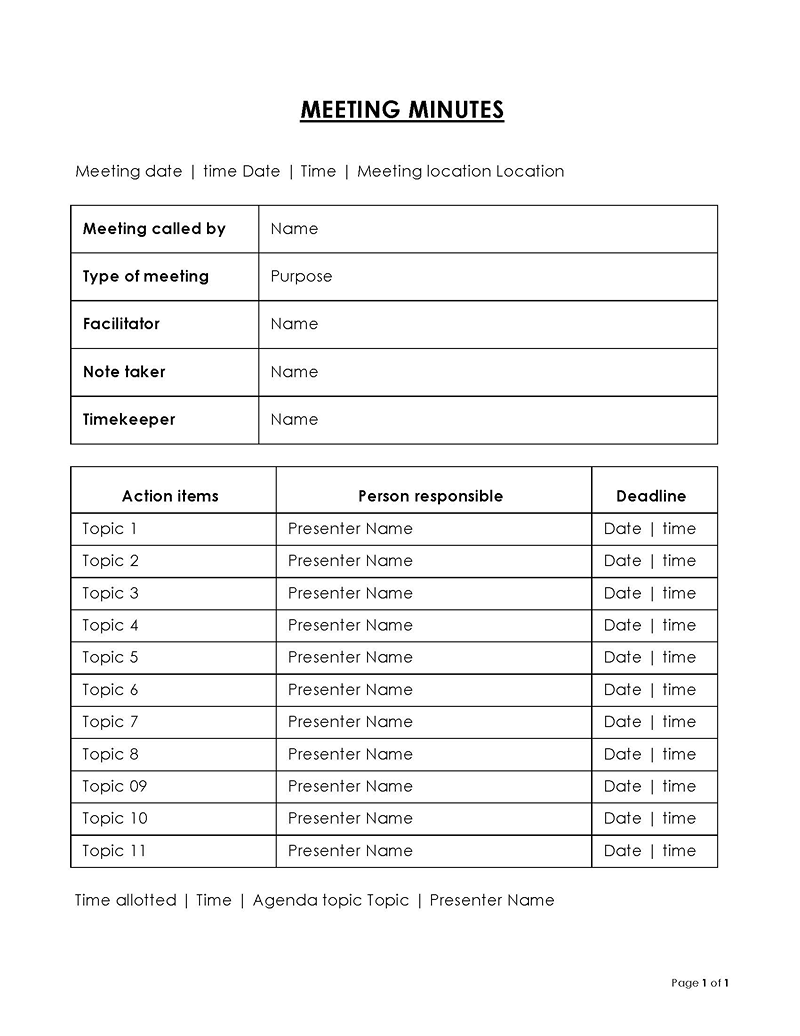
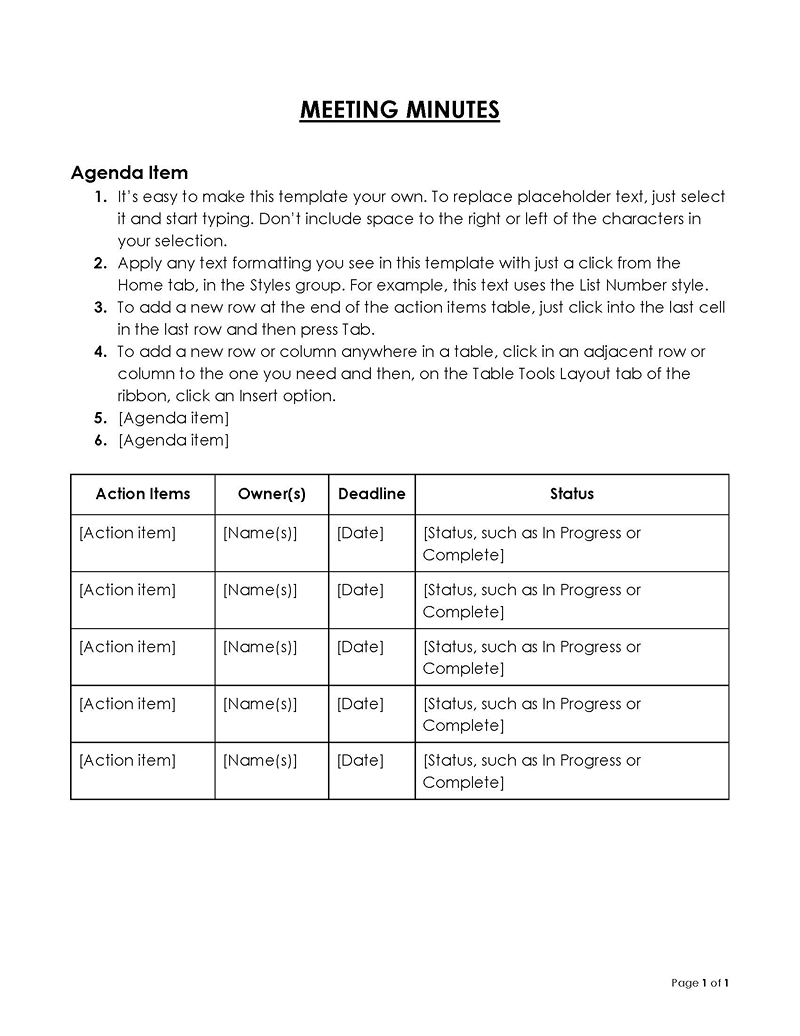
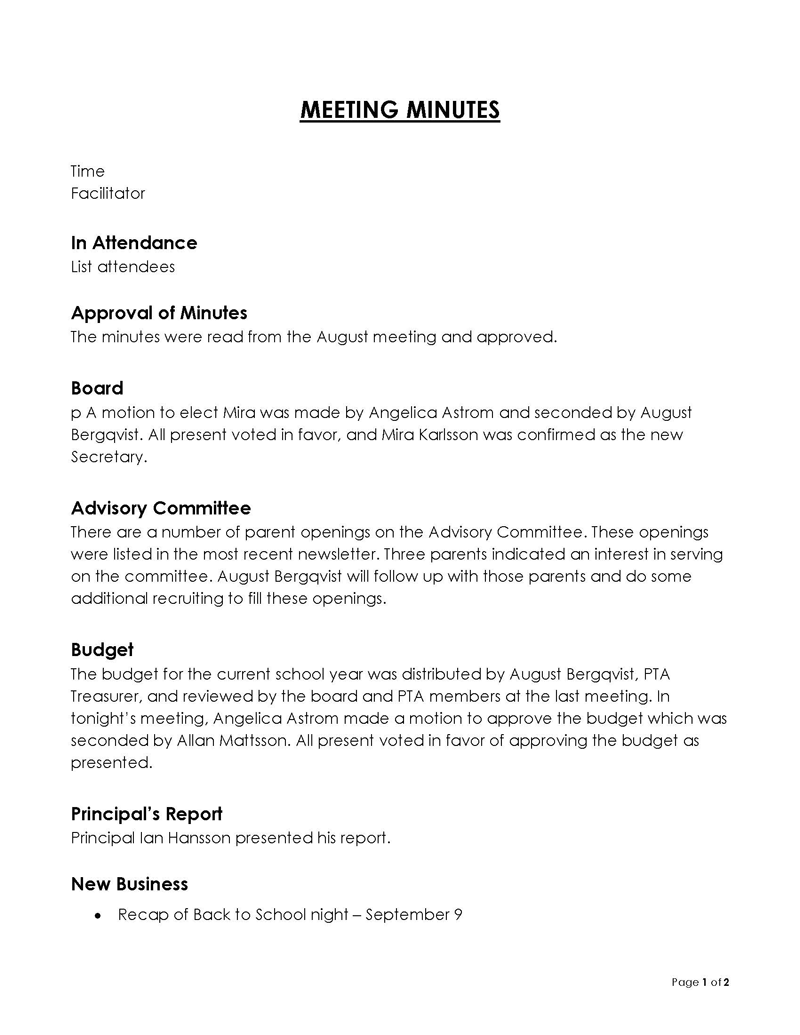
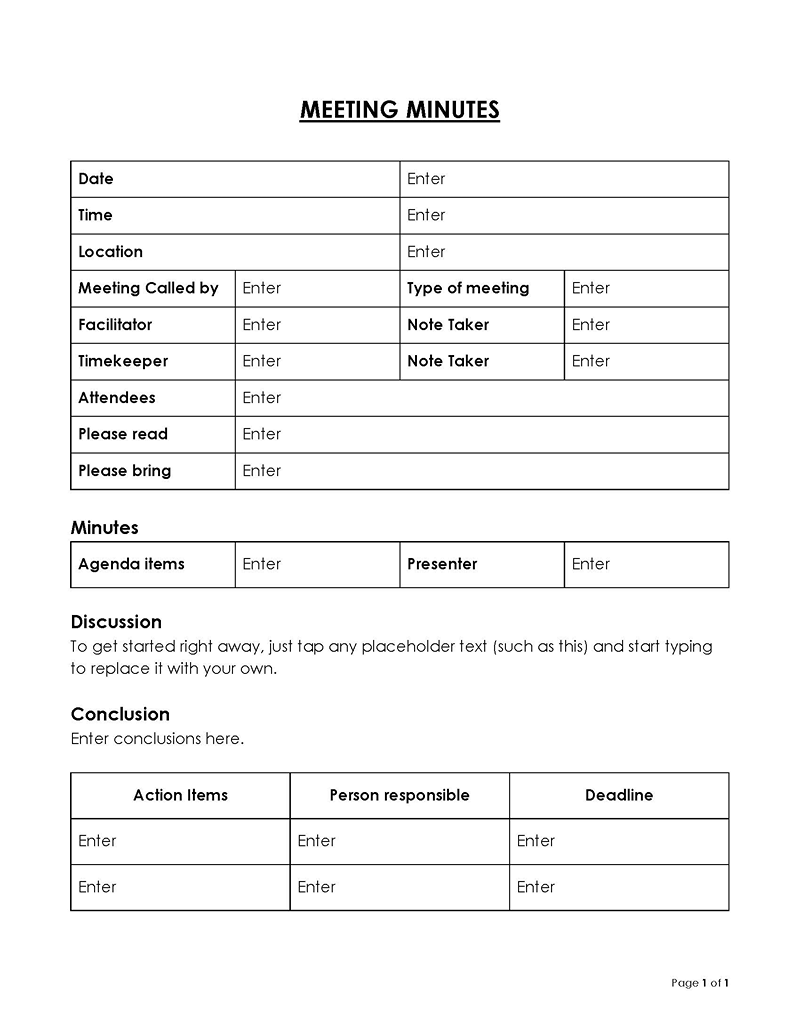
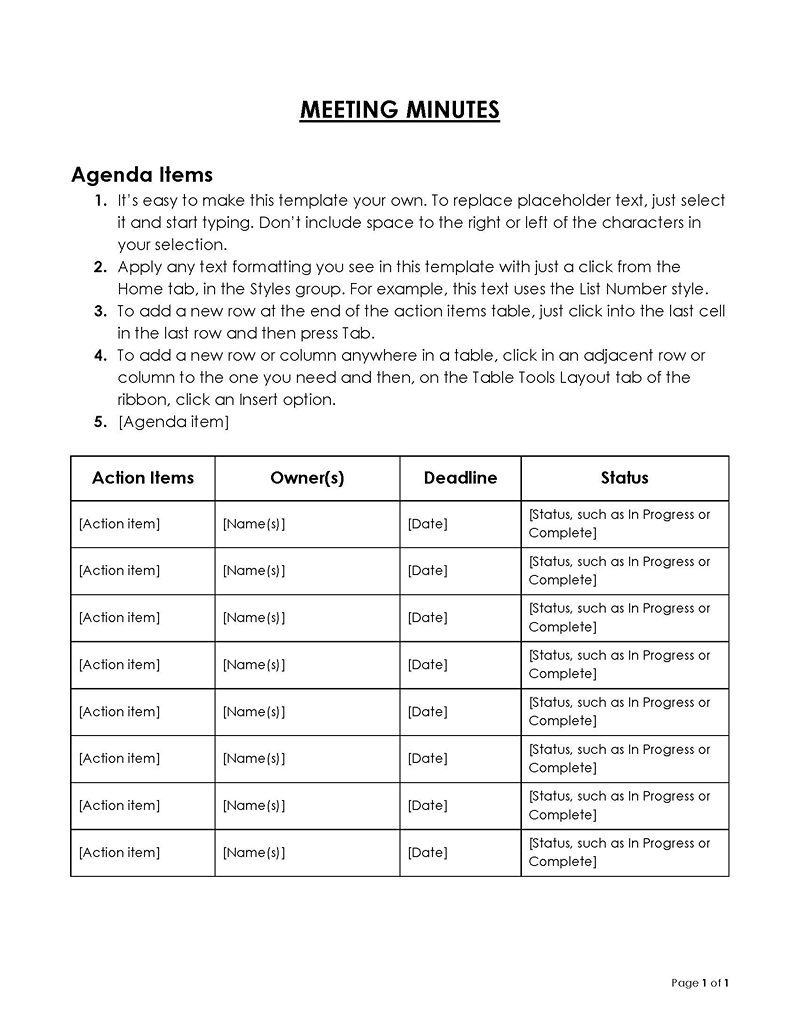
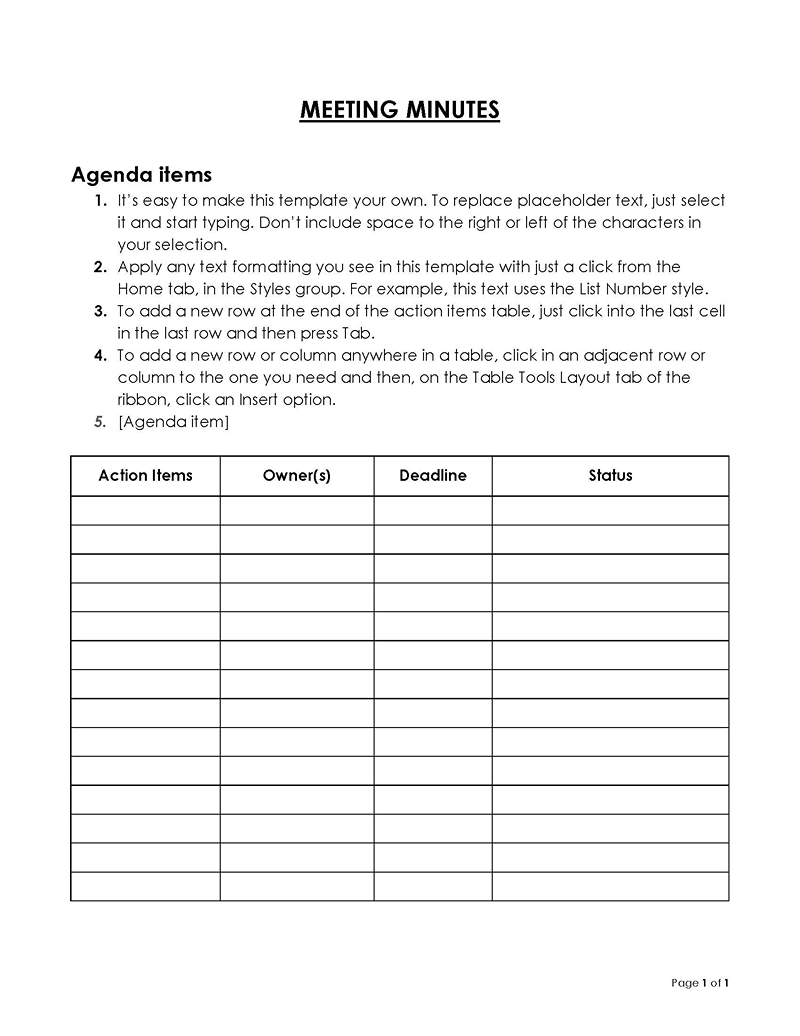
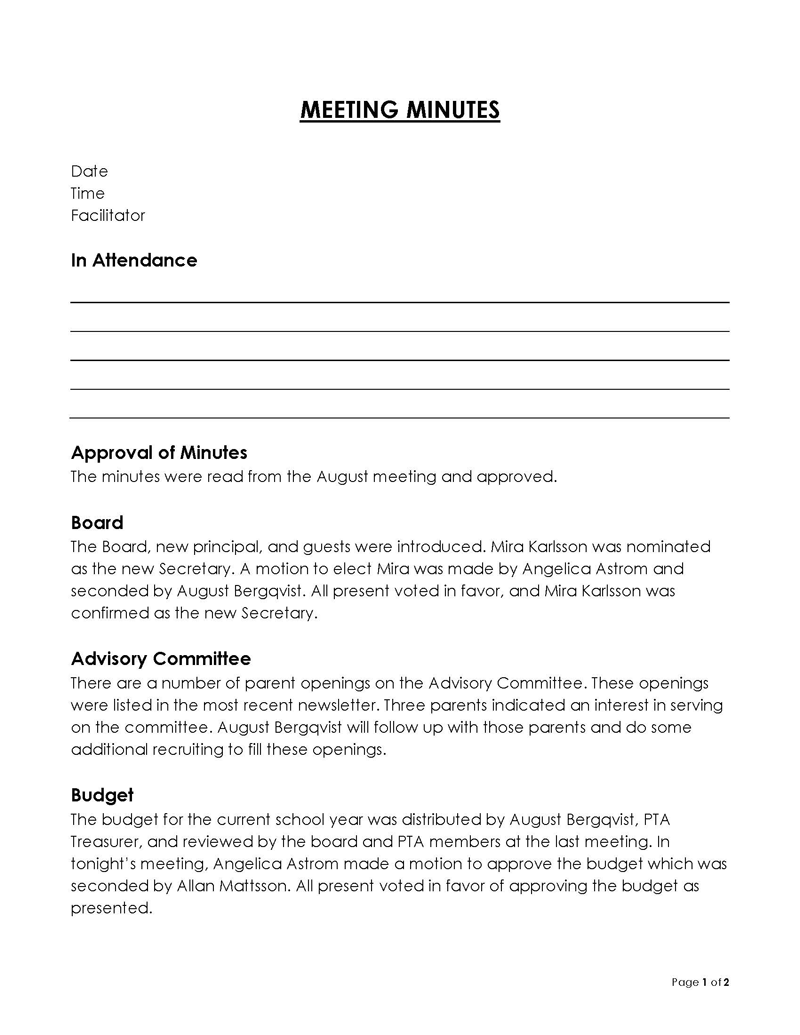
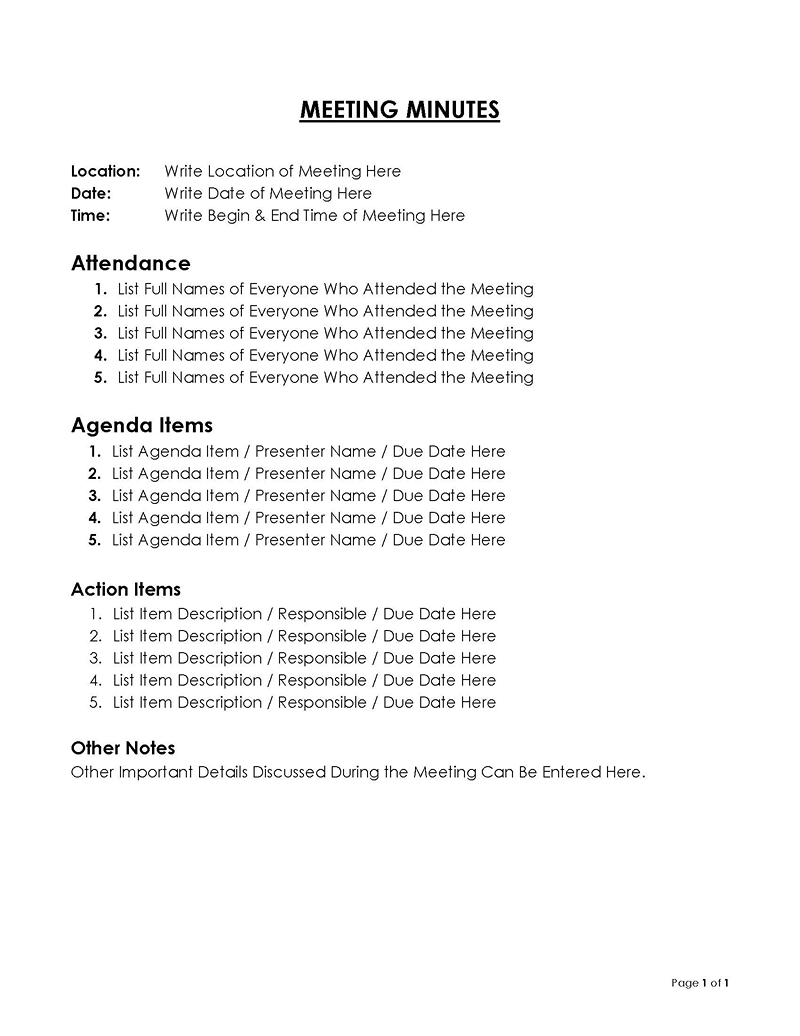
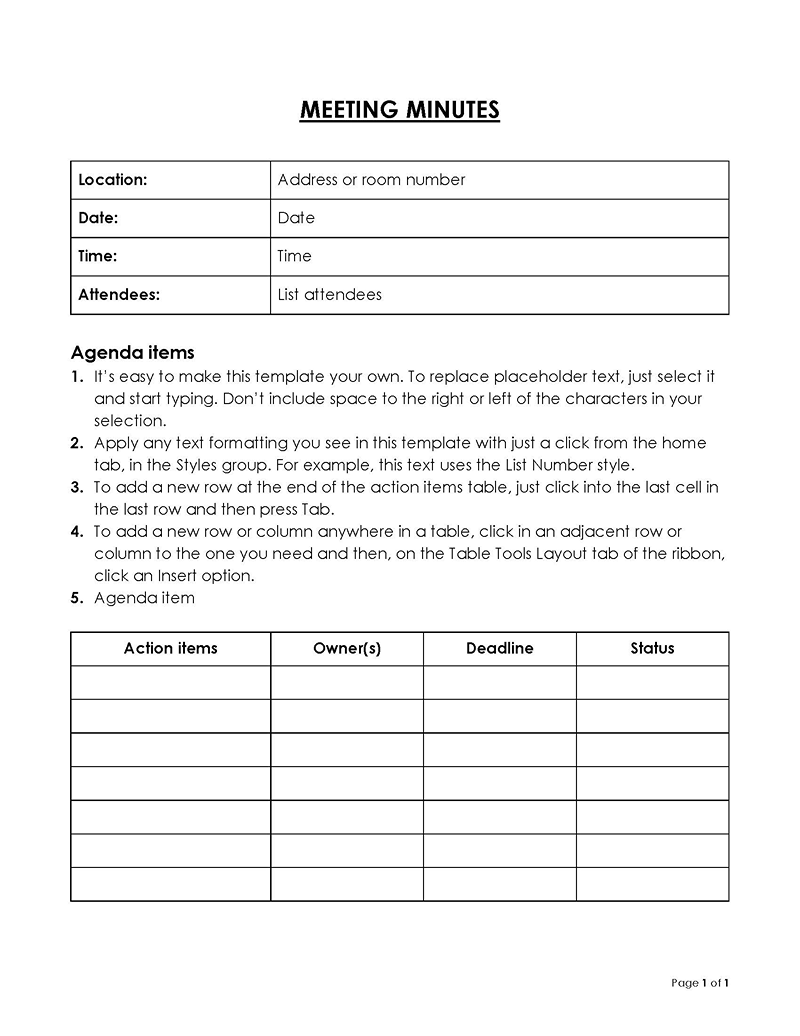
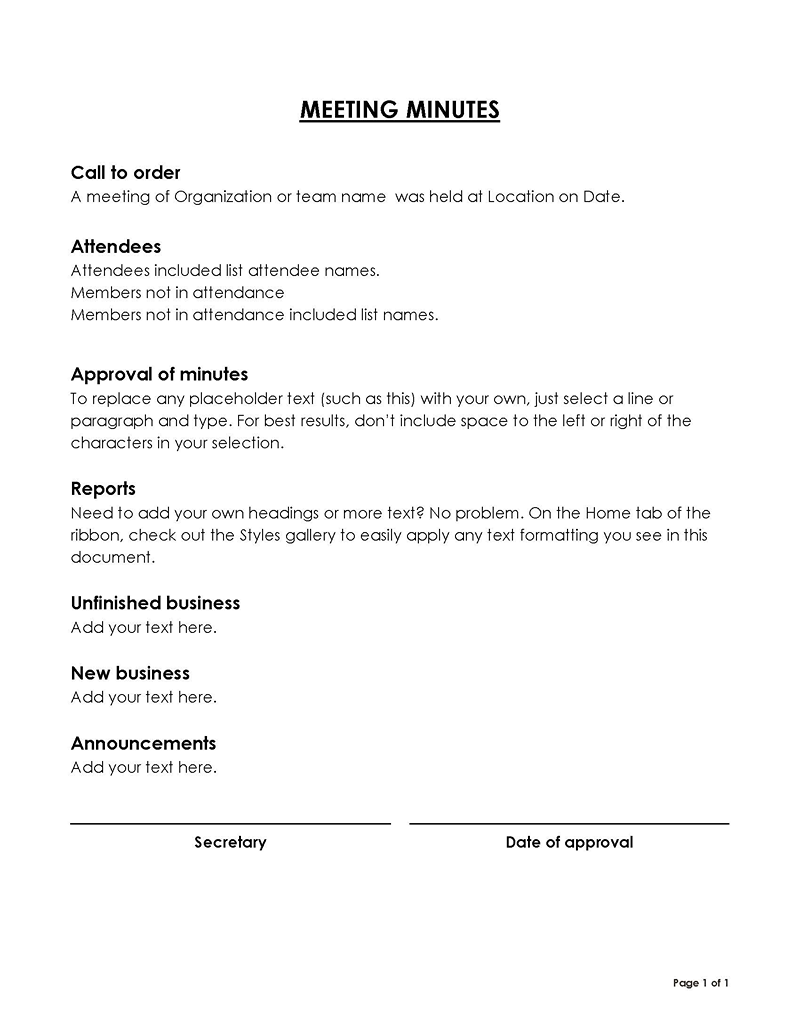
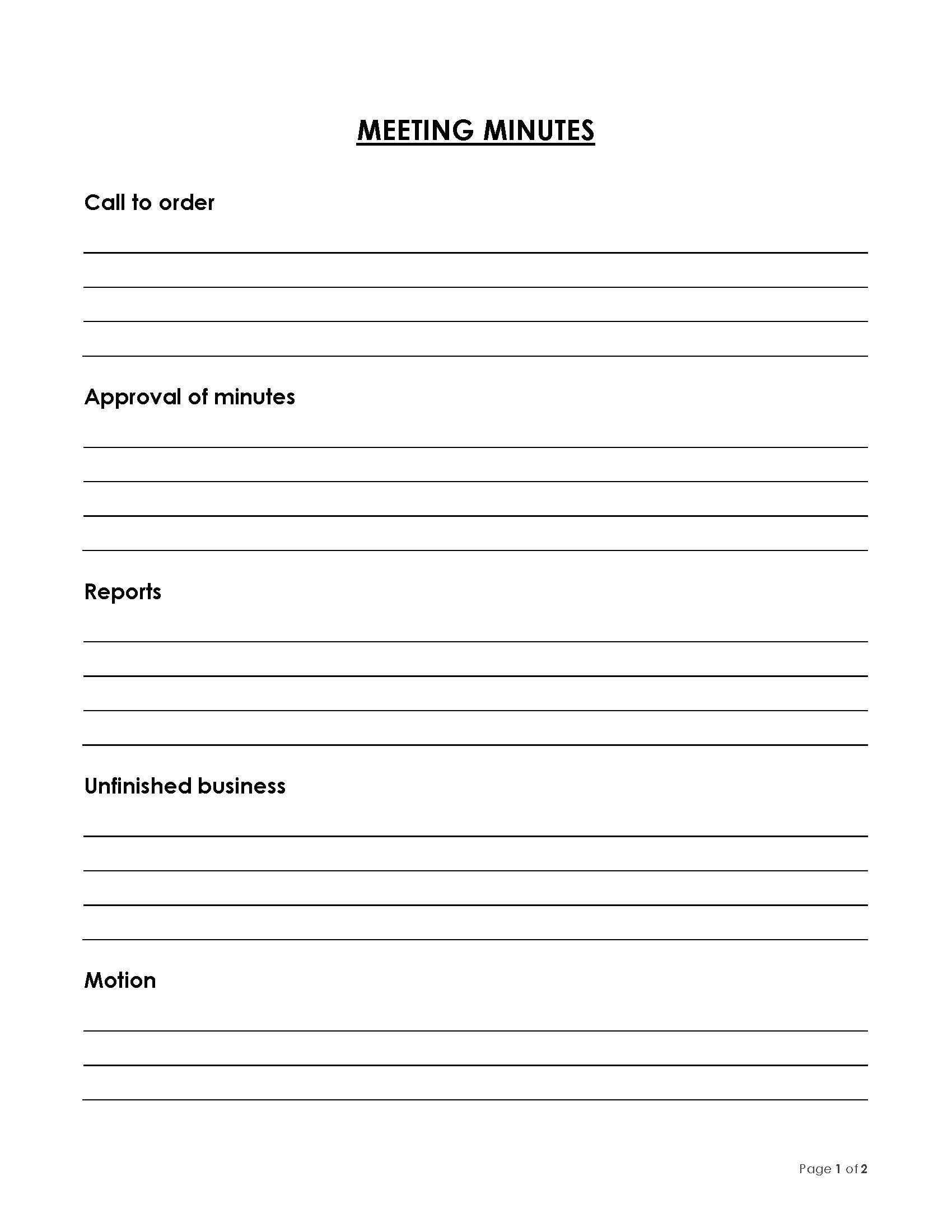
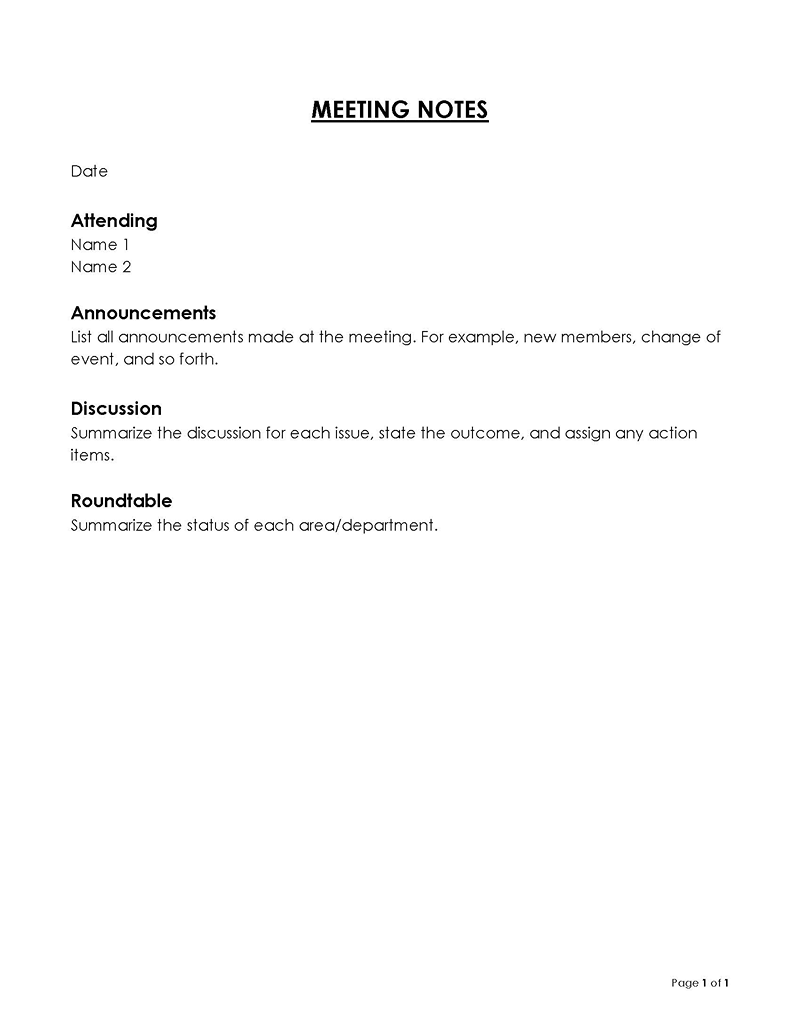
Preparation: Questions to Ask Before Writing Meeting Minutes
Before drafting minutes, it is important to understand the purpose and goals of it, as well as the participants involved.
Consider the following questions to guide your preparation:
- What is the single most important goal of the meeting?
- What are the secondary objectives?
- Why was this meeting scheduled?
- What agenda items are most significant?
- Who is likely to have questions after the meeting?
- What do you hope to gain from these minutes?
- What is the preferred format?
- Is anyone else taking notes?
Gathering this information beforehand ensures that the minutes are comprehensive, accurate, and relevant to the audience.
Analysis and summary
- Improved clarity and organization by creating proper-sized headings and bullet points
- Removed redundant questions and combined related questions
- Emphasized the importance of clear and concise minutes
- Added a title and restructured the introduction for better flow
Step-By-Step Guide on How to Write Meeting Minutes
Creating accurate and effective minutes is an essential skill for documenting its proceedings.
To ensure your minutes are comprehensive and useful, follow this step-by-step guide:
Step 1: Develop a template
Creating a consistent and well-structured template for your meetings helps maintain uniformity and ensures all relevant information is included. Consider including sections for attendance, agenda items, discussions, decisions, and action items. Common formats for templates include tabular or narrative structures. Prepare the template well in advance of the meeting for easy reference.
Step 2: Plan ahead
Collaborate with the chairperson and secretary to plan the meeting, establishing a clear and prioritized agenda to facilitate effective minute-taking. Obtain a copy of the agenda beforehand to use as a reference for note-taking and minute organization. As the designated minute-taker, understand your responsibilities and clarify expectations with the meeting chair.
Step 3: Take accurate notes
Ensure you are familiar with your organization’s specific requirements for minutes. Use best practices for note-taking, such as shorthand, recording only essential information, and noting key points or decisions. Consider using digital tools like a tablet or laptop for efficient note-taking and easy transcription later.
Generally, the minutes should include the following:
- Date, time, and location of meeting
- Names of participants and absentees, including their roles
- Confirmation of the previous meeting’s minutes
- Agenda items and related decisions, actions taken, and next steps
Step 4: Write or transcribe the minutes
Write the minutes within 24-48 hours after the meeting to ensure the information is accurate and fresh in your mind. Refine your outline, adding necessary details or clarifications. Use clear language, bullet points, and numbered lists to make the minutes more readable.
Make sure all decisions, actions, and motions are clearly documented, and the minutes are concise yet easy to understand.
Step 5: Request feedback and distribute the meeting minutes
Share a draft of the minutes with present and absent members for feedback or corrections before distributing the final version. Use your organization’s preferred method, such as digital sharing or email, and employ appropriate software like Microsoft Word or Google Docs to facilitate easy sharing and collaboration.
Set a deadline for feedback to ensure the minutes can be finalized and shared in a timely manner.
Step 6: Communicate notes and follow-ups
Email the official minutes to members, ensuring transparency by assigning follow-ups and action items.
The objectives of sharing the minutes include:
- Requesting approvals
- Expressing gratitude to attendees and board members
- Summarizing key decisions
- Assigning action items and deadlines
- Reiterating the next meeting date
- Offering to answer questions
Send reminders to attendees about their assigned action items or deadlines, as necessary. Track the progress of action items and their completion status to ensure accountability and follow-through.
Step 7: Review and revise the minutes
Review and revise the minutes based on feedback from attendees. Emphasize the importance of accuracy and completeness in the final version of the minutes.
Step 8: Store the meeting minutes
Keep these minutes for future reference by storing them securely, either online (e.g., Google Docs, OneDrive) or on an external hard drive. Use descriptive file names, create folders for each minute, and back up files regularly. Print and maintain paper copies as necessary, or provide them to a staff member or the chairperson for filing.
Essential Do’s and Don’ts for Writing Meeting Minutes
Understanding the dos and don’ts of writing the minutes is crucial to create effective and concise records.
Here are some key points to consider while taking and writing minutes:
Do’s
- Check off attendees as they enter the room
- Use a digital format for writing minutes
- Maintain the same tense throughout
- Utilize bulleted lists to save time
- Proofread and revise before sharing
- Number the pages and format for easy reference
- Use people’s initials as short forms for their full names
Don’ts
- Avoid capturing every detail; focus on important information
- Refrain from using names, except for recording motions and seconds
- Do not include personal observations or opinions
- Exclude board members’ opinions from the minutes
- Do not include summaries of documents or objectives
- Avoid recording the substance of legal advice
- Do not document how individual members voted
- Exclude off-the-record conversations from the minutes
Frequently Asked Questions
Yes, Google Docs is a suitable platform for recording the minutes. It allows for real-time collaboration, enabling team members to work at their own pace, maintain archived versions, and easily share documents without compatibility or attribution issues. In essence, Google Docs is a digital, collaborative document platform that streamlines the process of viewing and editing the minutes online.
There are various format samples available depending on your preferences. In the earlier part of this article, we provided free meeting minutes templates for your reference.
Yes, there are apps specifically designed for writing the minutes. These apps keep the minutes updated in real-time and facilitate collaboration with other team members. They are also useful for follow-ups and maintaining organized records.
Typically, a designated member of the organization is responsible for taking the minutes. This individual’s role is to maintain accurate records of the meeting’s proceedings, requiring attention to detail and a thorough understanding of the topics discussed. High-quality minutes are essential, as any stakeholder, whether they attended the meeting or not, should be able to read the minutes and understand their role in contributing to projects or making important decisions.
Ideally, it should be distributed within 24-48 hours after the meeting. This ensures that the information is still fresh in the attendees’ minds and allows for prompt follow-up on action items.
It is a common practice to have the minutes reviewed and approved by the meeting chair or other designated authority before distribution. This helps ensure accuracy and completeness of the information recorded.
The retention period for the minutes varies depending on the organization’s policies and legal requirements. Generally, it is advisable to retain the minutes for at least seven years, though some organizations may require longer retention periods.




